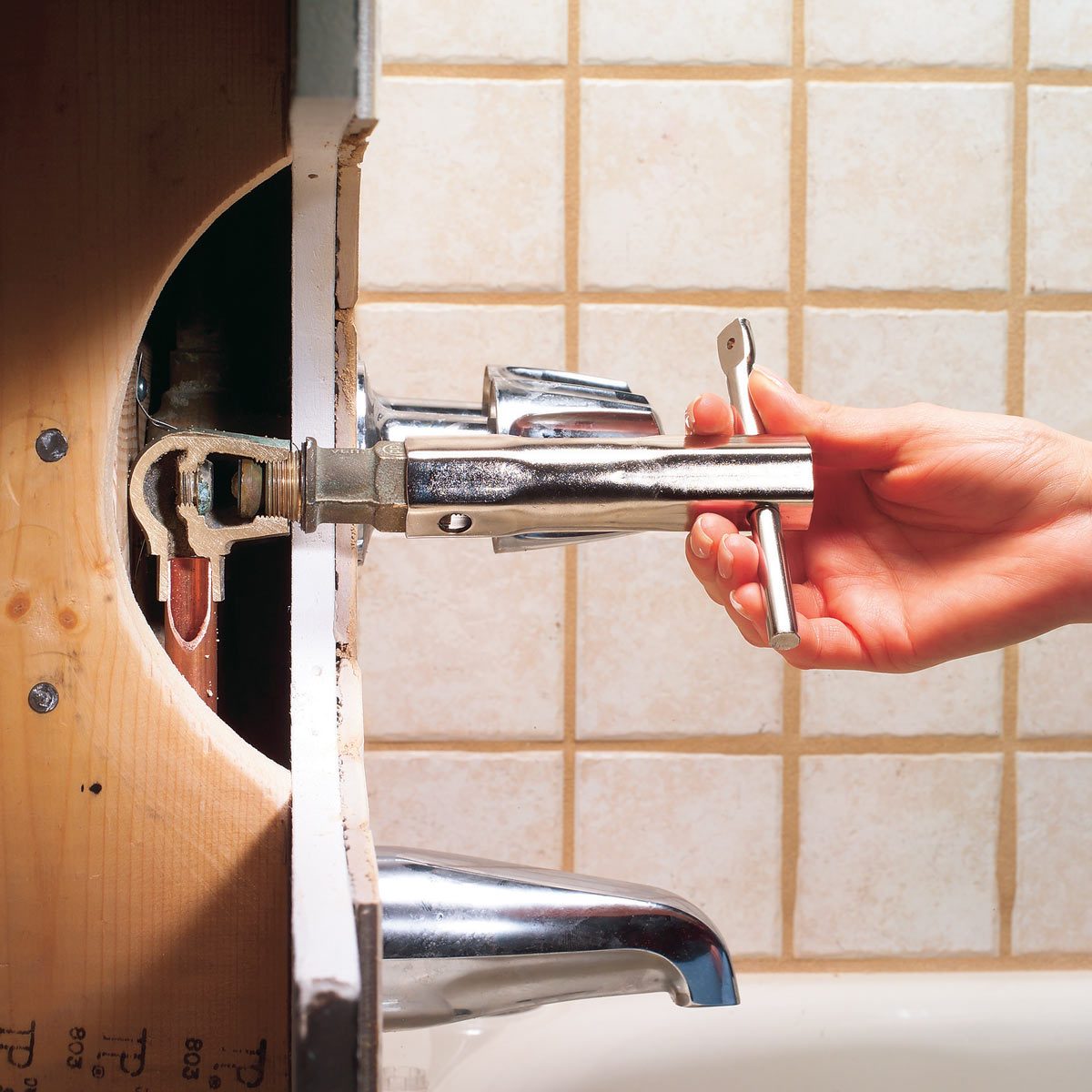Troubleshooting Common Causes of Bathroom Tub Faucet Leaks: Bathroom Tub Faucet Leaking

Bathroom tub faucet leaking – A leaky bathroom tub faucet can be a nuisance, wasting water and potentially causing damage to your bathroom. There are several common causes of bathroom tub faucet leaks, and identifying the cause is the first step to fixing the problem.
A dripping bathroom tub faucet can be a constant annoyance. If you’re looking for a quick and easy solution, check out build com bathroom faucets. They have a wide selection of faucets that are both stylish and functional. With a new faucet, you can enjoy a leak-free bathroom in no time.
Some of the most common causes of bathroom tub faucet leaks include:
- Worn washers: The washers in a faucet are responsible for creating a seal between the faucet handle and the body of the faucet. Over time, these washers can wear out and cause the faucet to leak.
- Loose connections: The connections between the faucet and the water supply lines can also become loose over time, causing the faucet to leak.
- Damaged seals: The seals in a faucet are responsible for preventing water from leaking out of the faucet. If the seals are damaged, the faucet can leak.
Identifying the cause of a bathroom tub faucet leak can be done by observing the location of the leak. If the leak is coming from the base of the faucet, it is likely caused by worn washers. If the leak is coming from the handle of the faucet, it is likely caused by loose connections. If the leak is coming from the spout of the faucet, it is likely caused by damaged seals.
Once you have identified the cause of the leak, you can begin to fix the problem. If the leak is caused by worn washers, you will need to replace the washers. If the leak is caused by loose connections, you will need to tighten the connections. If the leak is caused by damaged seals, you will need to replace the seals.
The relentless drip of a leaking bathroom tub faucet can drive one to distraction. It’s a constant reminder of a nagging problem that needs to be addressed. But before you delve into the complexities of plumbing, consider the sheer number of bathrooms in the White House.
With over 30 bathrooms at the disposal of its occupants, the White House stands as a testament to the luxuries of high office. Yet, even in the grandest of settings, the humble bathroom tub faucet can still be a source of frustration, a reminder that even the most opulent of abodes are not immune to the trials of everyday life.
Step-by-Step Guide to Repairing a Leaking Bathroom Tub Faucet

Repairing a leaking bathroom tub faucet is a common household task that can be easily accomplished with the right tools and materials. Follow this step-by-step guide to fix the leak and restore your faucet to proper working order.
Gathering Materials and Tools, Bathroom tub faucet leaking
Before starting the repair, gather the necessary materials and tools:
- Replacement faucet parts (if needed)
- Adjustable wrench
- Phillips head screwdriver
- Flat head screwdriver
- Plumber’s tape
- Rags or towels
- Bucket or bowl
Preventive Measures to Avoid Bathroom Tub Faucet Leaks

Preventing bathroom tub faucet leaks is crucial to maintain a functional and water-efficient bathroom. Regular maintenance, proper installation, and using high-quality components can significantly reduce the risk of leaks.
Regular Maintenance
Regular cleaning of the aerator helps prevent mineral buildup and ensures smooth water flow. Additionally, checking for loose connections, such as those at the base of the faucet or the handles, and tightening them if necessary, can prevent leaks.
Professional Installation
Hiring a qualified plumber for faucet installation ensures proper alignment and sealing, minimizing the likelihood of leaks. DIY installations may lead to incorrect fittings or improper sealing, increasing the risk of leaks.
High-Quality Components
Investing in high-quality faucet components, such as durable washers, seals, and handles, contributes to leak prevention. Cheap or low-quality components are more prone to wear and tear, leading to leaks over time.